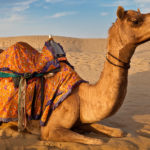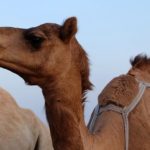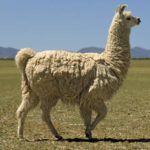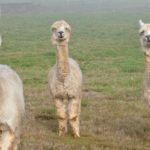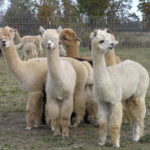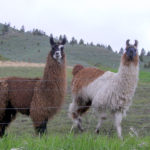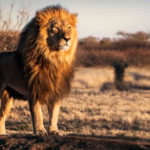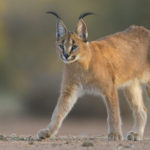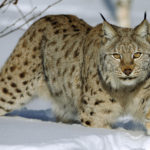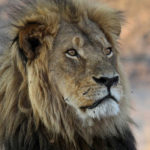Camels – information
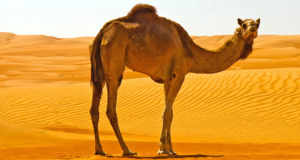 In nature, camels have almost no enemies, since in the barren deserts in general there are no large animals. However, wolves can be dangerous to young two-humped camels, in the old days one-horned camels were threatened by Berberian lions, and two-humped camels were threatened by Transcaucasian tigers (now these predators are exterminated). Their main enemy was and remains a man. The complete disappearance of single-horned camels in nature and the catastrophic decrease in the number of bunches are explained by hunting and mass catches for domestication in antiquity, as well as the destruction of natural habitats in modern times. Now in the world there are about 1000 individuals of wild two-humped camels, which are protected in the reserves of Mongolia and China. They are listed in the Red Book.
In nature, camels have almost no enemies, since in the barren deserts in general there are no large animals. However, wolves can be dangerous to young two-humped camels, in the old days one-horned camels were threatened by Berberian lions, and two-humped camels were threatened by Transcaucasian tigers (now these predators are exterminated). Their main enemy was and remains a man. The complete disappearance of single-horned camels in nature and the catastrophic decrease in the number of bunches are explained by hunting and mass catches for domestication in antiquity, as well as the destruction of natural habitats in modern times. Now in the world there are about 1000 individuals of wild two-humped camels, which are protected in the reserves of Mongolia and China. They are listed in the Red Book.
The role of the camel in human life is ambiguous. A European camel will soon cause a grin or disdain, because this animal can not boast of grace, beauty, or speed, and the habit of spitting negatively affects its image. Diametrically opposite attitude to camels from those peoples who breed them. Here camels use honor above all other domestic animals. By the way, they were domesticated simultaneously with horses and donkeys, that is 5000 years ago.
Camels played a key role in the formation of nomadic civilizations, and not only. Without camel caravans, the Marco Polo journey, the discovery of India and China, the acquaintance of Europeans with rice, spices, silk, paper, precious stones of the East could not take place. Camels were used in numerous wars in India, China, Pakistan, throughout the Arabian Peninsula and North Africa, and as such they were used until the twentieth century, and in India there is now a cavalry camel regiment patrolling hard-to-reach sections of the border.
Now the camel is depicted on the coat of arms of Eritrea. Few people know that the development of North America took place not only with the participation of deft cowboys on fast horses, but also with the help of camels that delivered goods to the southern states. When the transport function was taken over by the railway, the camels were out of work and were thrown out by the owners into the desert. There they perfectly multiplied, but stray animals provoked discontent among farmers and in the early twentieth century were completely destroyed. Similarly, the fate of camels in Australia. With the active participation of the continent, they also mastered it. And here people also proved ungrateful and left the animals to their fate.
Only in Australia, the wild camels were not destroyed, but multiplied and mastered all the inner regions of the continent. Now in this country there are 50-100 thousand feral dromedaries – a kind of compensation for the destruction of this species in their homeland. Such a number of camels is regarded as unfavorable, as they are food rivals of native species (kangaroos).
Breeding camels has its own characteristics. On the one hand, these animals are unpretentious, in Africa and Arabia they are kept in free grazing or in open pens. The same content is also used for bunny-humped camels, but they are often kept in closed unheated rooms in winter. Feeds camels forage, they eat both low-quality hay, and food scum (bread, porridge, vegetables), Bactrian graze in winter pastures. On the other hand, their grazing is associated with some difficulties. The fact is that camels with soft paw pads can not unearth snow (tebenevat), and nast strongly injures their legs, so they are trying to release them to pastures after horses. Horses crush the nap with hoofs, and camels from under loose snow extract what the horses have not eaten. For the same reason, camels can not be used on bad gravel roads.
The relationship of camels with people is not easy, they have a “complex” character in the cat-like manner. On the one hand, camels are not aggressive, calm and impenetrable, they are easy to manage and they do not require constant supervision. But it would be a mistake to believe that camels are brainless and uncomplaining cattle, these animals have a very developed intellect and self-esteem. So, a camel allows you to milk yourself only to a certain person and only in the presence of a camel. A sleeping or tired camel can not be lifted to his feet until he finds that he has already rested.

